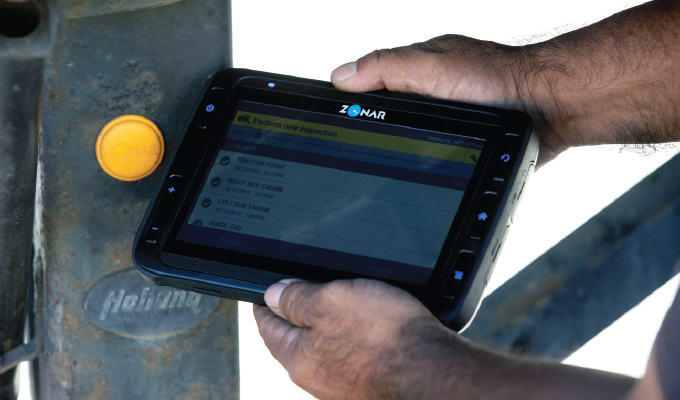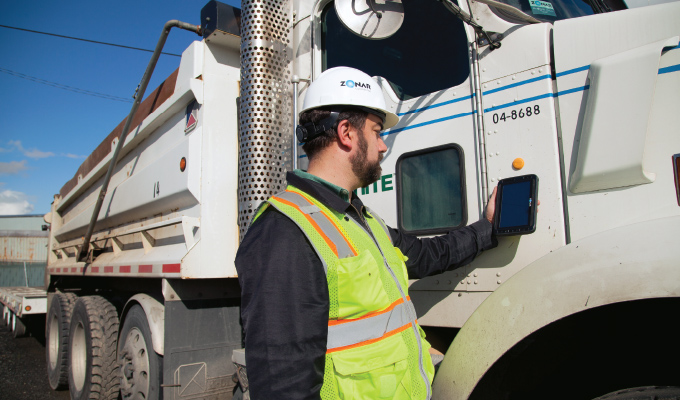By Fred Fakkema
Equipment and safety managers leverage technology to streamline operations and improve safety during the COVID-19 pandemic. As a result of public health guidelines established by the Centers for Disease Control and Prevention (CDC), the US Department of Labor’s Occupational Safety and Health Administration (OSHA) responded with new safety and compliance standards for construction industry training programs, evaluations, and reporting.
According to the EHS Daily Advisor, the construction industry was among the most frequently cited for violating OSHA workplace safety standards in 2020. During a year when workplace safety was one of the highest priorities of managers and the public alike, equipment and safety managers sought innovative ways to stay up to date on the latest OSHA guidelines to avoid future violations.
What has come to light in the last year are three key areas where the construction industry is seeing technology and safety best practices implemented at the worksites and behind the scenes. Many innovative models enable construction teams to safely operate during the pandemic and adhere to OSHA regulations.
COLLABORATION
While safety managers are responsible for everything that falls under the work area—such as ensuring the use of Personal Protective Equipment (PPE)—the responsibilities that fall under equipment managers differ and are geared more toward equipment use and maintenance.
This is why collaboration between these two roles is critical for ensuring compliance and safety. For an example, consider walkaround vehicle inspections and safety briefings. While social distancing guidelines have impacted the number of people recommended at worksites, digital tools for pre-and post-trip inspections, such as Electronic Verified Inspection Reporting (EVIR®), enable greater collaboration between safety and equipment managers through the digitization and verification of activities.

EQUIPMENT UPKEEP
The pandemic has interrupted typical fleet service schedules and equipment maintenance timelines. Service timing and inspections are critically important to the drivers and operators of work trucks and equipment, and once inspection intervals are off schedule, problems like low fluid can turn into costly issues and repairs. Even malfunctioning lights, if noticed by an OSHA inspector, can lead to a more detailed inspection and therefore downtime and possible fines.
The availability of equipment data can also help encourage the safety mindset among construction professionals to execute proper on-site inspections in addition to regularly scheduled maintenance by service teams.
ASSET USE
Asset use is another area that has been impacted by the COVID-19 pandemic. While OSHA guidelines encouraged construction fleets to adopt staggered work schedules to reduce the total number of employees on the worksite, some projects were put on hold. Paused projects released numerous pieces of equipment and vehicles for use at other projects/worksites, rather than sitting idle. Perhaps one positive outcome from trimming back the workforce at one site was the ability for site and equipment managers to identify freed up equipment in real time and redirect people and resources to new projects—streamlining the efficiency of their fleets.
Asset tracking can also protect against theft, which construction fleets and worksites are prone to. Historically, property crime has increased after a recession and with more sites abandoned or put on pause during the pandemic, ill-intentioned passersby have found the pandemic another opportunity to target jobsites and the theft of high-value equipment. Asset tracking equipped with cellular and GPS communication can locate equipment immediately, or its location pings can provide law enforcement assistance in the recovery of stolen worksite assets.
WORKPLACE COMPLIANCE
By ensuring compliance with OSHA guidelines, regulations, and standards, the benefits for fleets are two-fold. First, when fleets are compliant with worksite and OSHA regulations, a greater sense of safety exists. Second, ensuring compliance also holds the benefit of proper equipment upkeep. By ensuring proper pre- and post-trip inspections through EVIR, construction fleets are tied into maintenance software and real-time alerts of malfunctioning equipment are flagged. This saves time and erroneous trips to the worksite, lowering the risk for potential exposure to COVID-19.
It is also important to keep in mind that every state may have its own OSHA inspection standards, so managers of construction fleets must ensure their vehicles are in compliance with standards that vary between local jurisdictions for completing Job Safety Analysis (JSA) and worksite safety briefings.
ABOUT THE AUTHOR
Fred Fakkema is the vice president of safety and compliance at Zonar. Find out more, visit www.zonarsystems.com.




